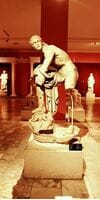The Antalya Museum, also known as the Antalya Archaeological Museum (Antalya Müzesi, Antalya Arkeoloji Müzesi) is a city archaeological museum in Antalya, which is considered one of the leading museums not only in Turkey, but also around the world, and is one of the masterpieces of its kind.
The Antalya Museum contains historical artifacts (sculptures, vases, coins, icons, mosaics and other items) from the Lower Paleolithic to the Roman period.
The museum is dedicated to three important Mediterranean ancient civilizations "Lycia", "Pamphylia" and "Pisidia", who lived within the borders of the Antalya region, which was one of the first places where human traces are visible in Anatolia. So, fragments of the Neanderthal skeleton found in the Karain cave, magnificent sculptures found in Perge, one of the centers for the production of sculptures of the ancient era, the coins of Elmala, which are called the "Treasure of the Century", and the finds discovered during excavations at St. Nicholas Church, that is, the church of Santa Claus, are not only priceless, but also reflect the history of human development and activity in this area.

The Antalya Museum was founded by Suleiman Fikri Bey to preserve and display to the public the archaeological treasures found in the city and the surrounding area.
Initially, the museum was opened in the Alaeddin-Jami Mosque (1922), since 1937 the museum's exposition was located in the Iivli-Jami Mosque, and in 1972 the museum moved to its current building, which corresponds to modern museum concepts.
Today, the Antalya Museum has about 5 thousand artifacts, some of which are displayed in the halls of the museum. The museum consists of 13 exhibition halls, a children's section and an open-air exhibition area with a garden. The museum also houses laboratories, a storeroom, repair shops, photo rooms, a conference room, administrative offices, a cafeteria and living quarters for museum employees.
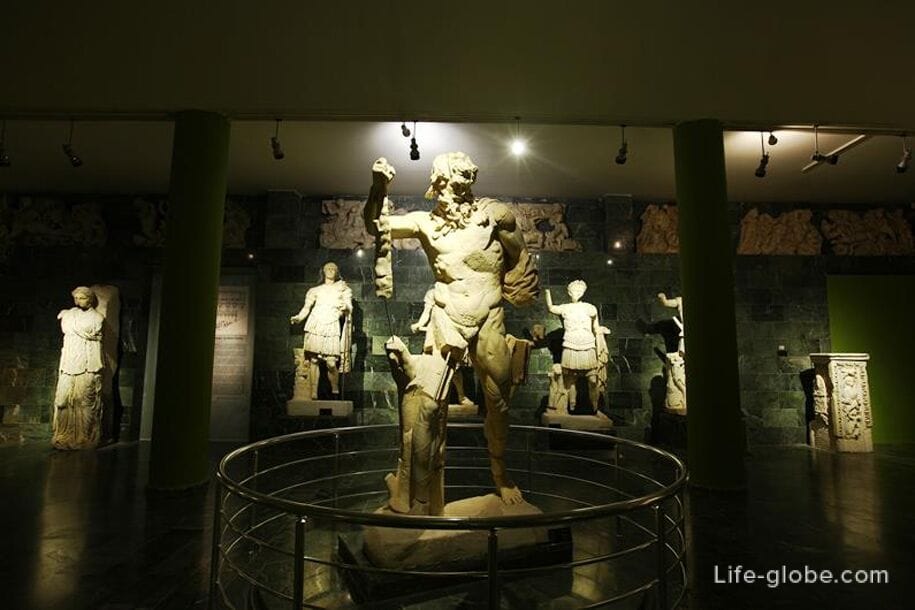
One of the masterpieces of the Antalya Museum is the sculpture Hercules.
This is a copy of the sculpture of Lysippus, the famous sculptor of the 4th century BC, 2nd century BC, which belonged to the ancient city of Perga, famous for its sculpture.
The lower part of the sculpture was found during excavations in 1980, and the upper part, illegally exported abroad, was returned in 2011, after which both parts of the sculpture were combined.
The sculpture depicts a tired Hercules leaning on a club after defeating the Nemean Lion, impervious to any weapon. Although there are 60 copies of this sculpture, known as the "Hercules Farnese" of the Roman period, however, the sample exhibited at the Archaeological Museum of Antalya is considered superior to others in terms of craftsmanship.
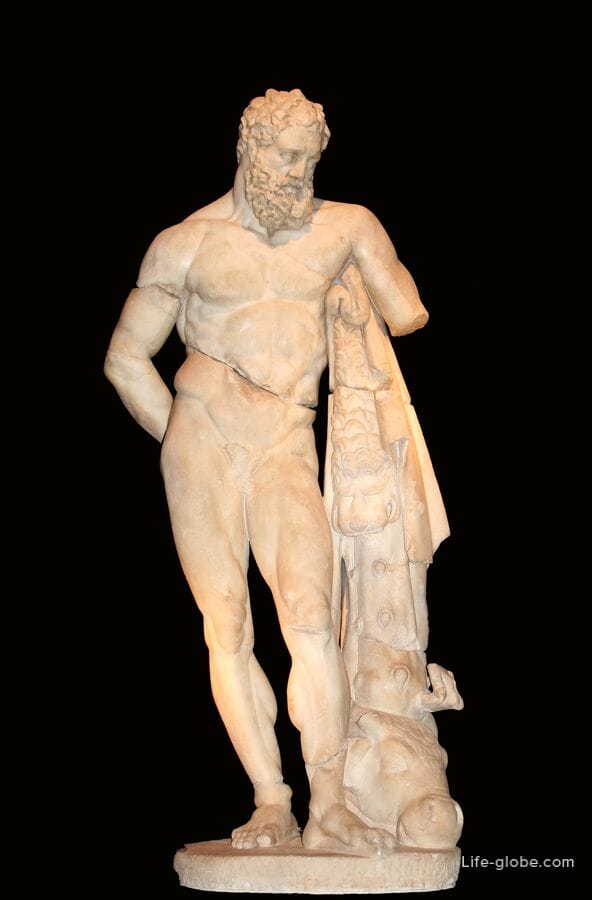
Halls and sections in the Archaeological Museum of Antalya
Natural History Hall, which shows the living creatures of the earth, from unicellular animals to humans, diagrams and drawings, fossils and bones.
Prehistoric hall, which exhibits works found in Karain, Okuzini and Sehahoyuk. Karain is a cave that has been the arena of a continuous series of civilizations. Exhibits range from the Paleolithic to the Roman era and include animal fossils and kitchen utensils.
Protohistorical hall, which exhibits Neolithic, Calcolite and Early Bronze Age works found in Khachilar. Most of the works of this section of the museum were found during excavations in Semahoyuk and its surroundings.
A hall of the classical antique period with artifacts dating from the Mycenaean to Hellenistic eras, including clay figurines, wine bowls and dishes. One of the important exhibits of the hall is a statuette of Apollo. It also shows sculptural works of the Roman period, which make up the largest part of the museum.
Sculpture Hall of the Gods, where statues of mythological characters dating from the 2nd and 3rd centuries AD, Roman period are displayed. The statues were found during excavations in Perga. The list of statues includes: Minerva, Zeus, Artemis, Harpocrates, Aphrodite, Asclepius, Tyche, Meleager, Hecate, Hermes and Marsyas.
Hall of Emperors (Imperial Hall), which contains sculptures of Roman emperors found during excavations in the ancient city of Perga, and are among the masterpieces of Roman art. There is also a sculpture of a dancer, which is a symbol of the Antalya Museum, and was put together after it was discovered in parts.
Sarcophagus Hall, where sarcophagi are displayed, in which important and rich people were placed after death in the ancient era. The sarcophagi themselves are also works reflecting an understanding of the art of the time. Floral motifs and complex figures are used in the decoration of sarcophagi. Most of the sarcophagi that can be seen in the hall belong to to the ancient city of Perga. The most popular of them are the sarcophagus of Domitius, which belonged to a married couple, apparently not separated after death; the sarcophagus of Hercules, depicting the 12 exploits of Hercules; and a garland sarcophagus decorated with a number of floral motifs.
Mosaic hall, where you can see mosaics of the Byzantine period, found during excavations in the ancient city of Xanthos, and icons from the vicinity of Antalya.
In the coin hall there are samples of coins made of gold, electron, silver and copper, from the Hellenistic to the Ottoman periods. The most significant parts of this part of the museum are the "Elmali Coins", which are called the "Treasure of the Century"; as well as coins issued by cities allied against the Persians - these are monumental coins, very rare, and issued when the Greeks defeated the Persians. In the hall you can see the finds found during shipwrecks, jewelry and icons, as well as get acquainted with the traditions and methods of minting Anatolian coins.
The section of church artifacts exhibits wooden church objects depicting the life and writings of Jesus Christ. In addition, artifacts depicting St. Nicholas and his sacred relics are displayed in the casket.
Ethnographic halls, in which lamps and glass objects of the Roman and Byzantine periods are exhibited; samples of Seljuk and Ottoman tiles; Anatolian carpets of the Ottoman period; inscriptions, books, candlesticks, dervish paraphernalia, clothing, embroidery, weapons and metal objects; figures from the lintel from the tomb found opposite Limira, etc. Part one of the halls is furnished like a typical Anatolian house.
The children's section of the museum, which is located right behind the entrance to the museum, and was originally organized as a Children's Museum, the first of its kind in Turkey, demonstrates various children's toys, antique piggy banks and other relevant items.
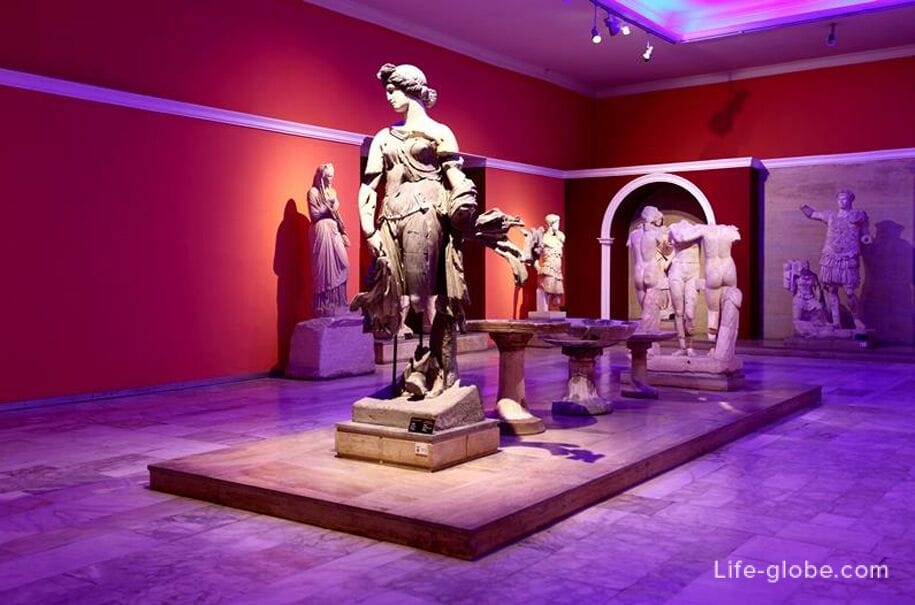
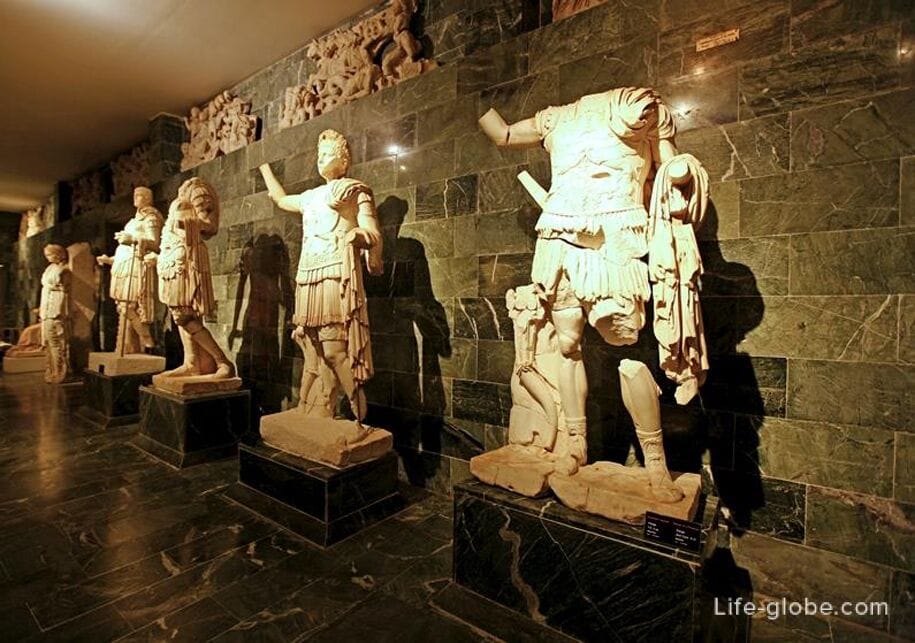
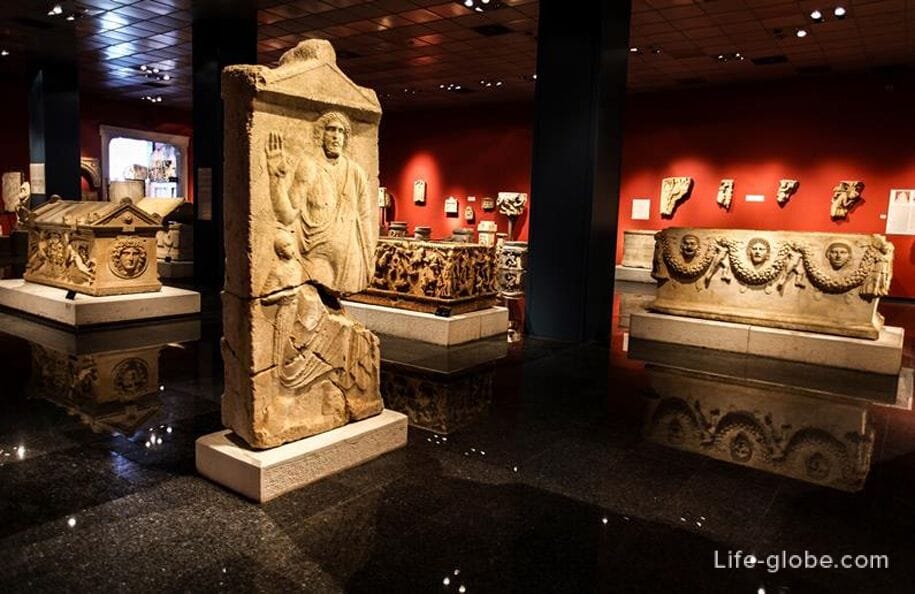
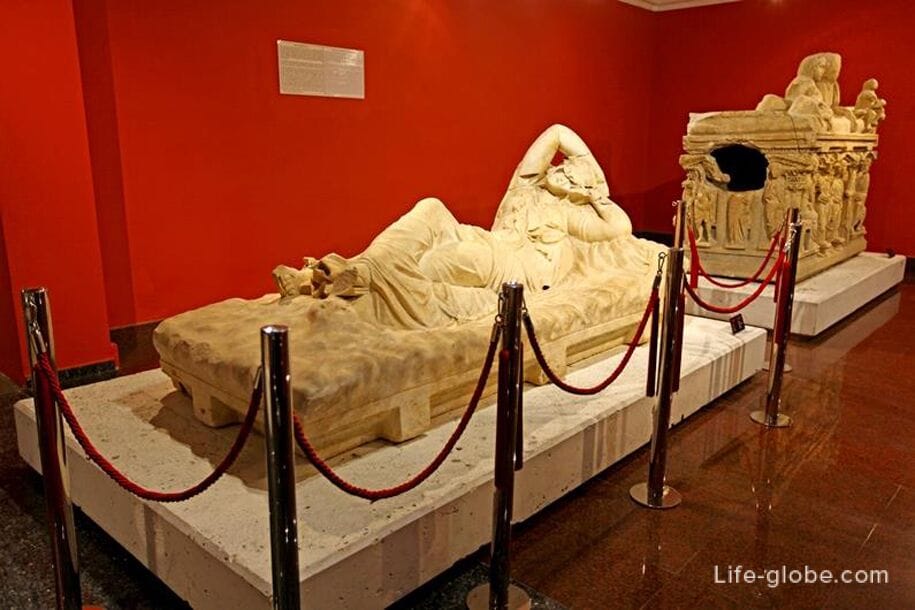
Statue of the Roman Emperor Hadrian
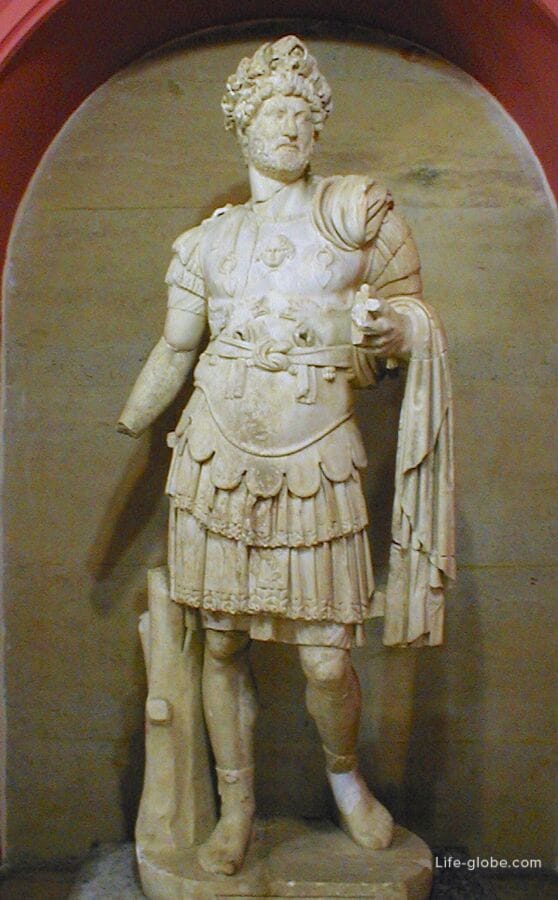
Marble statue of Trojan
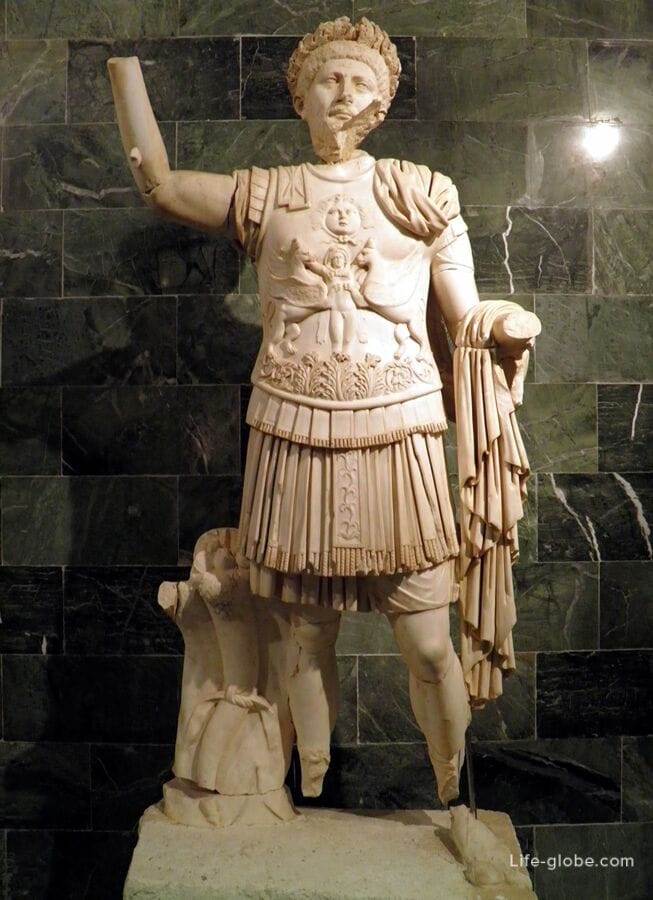
Sarcophagi
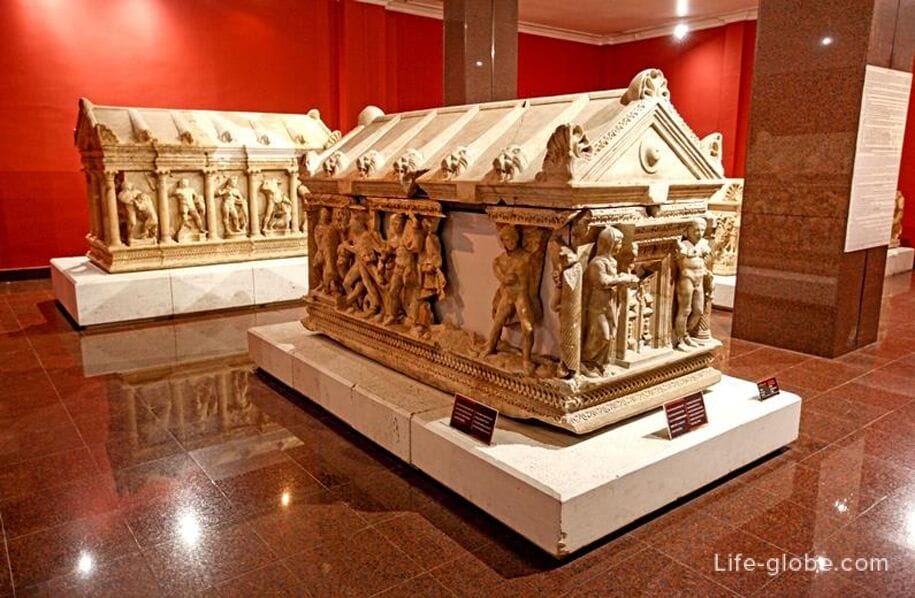
Sacred Relics of St. Nicholas
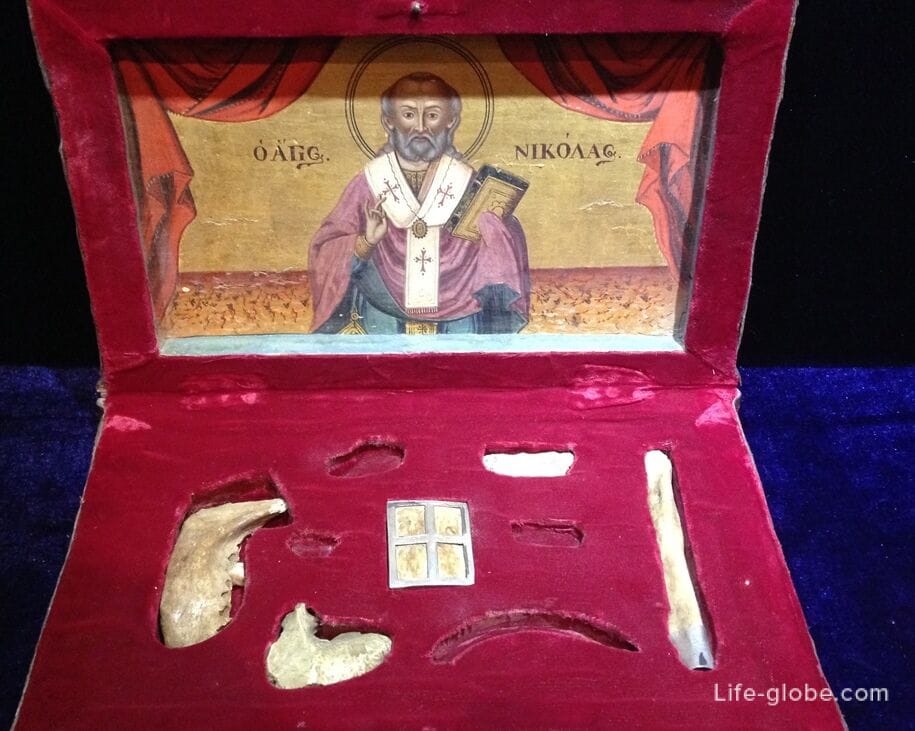
Icons and objects

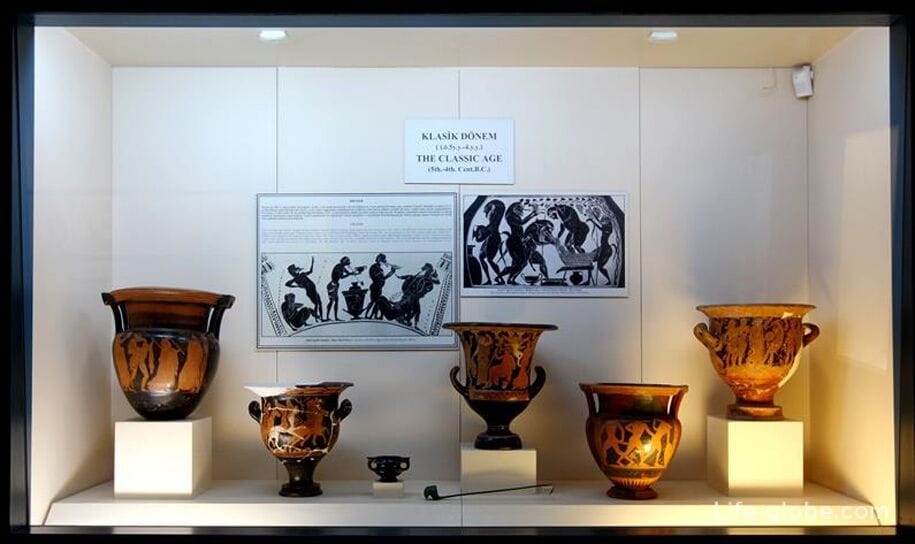
The garden at the Antalya Museum also exhibits the Archaeological Museum of Antalya.
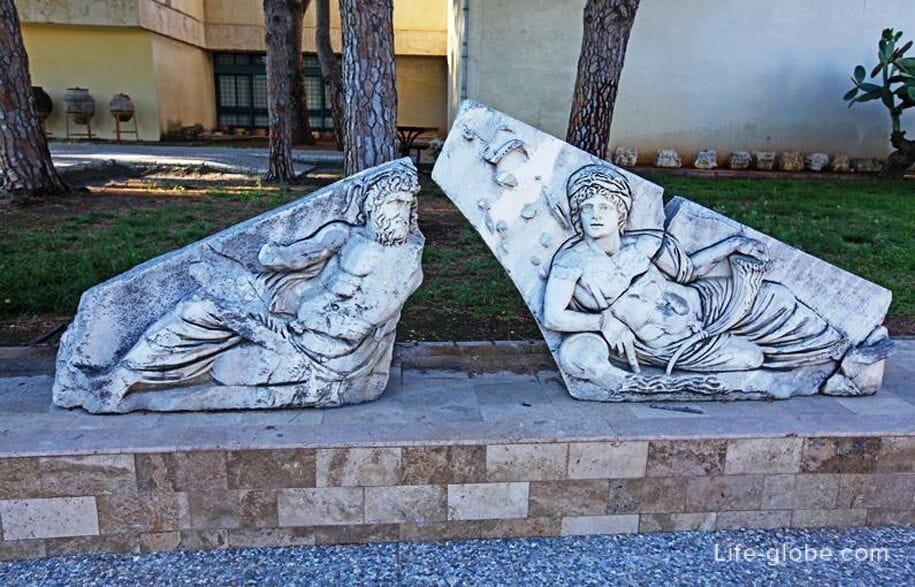
Practical information
Address of the Archaeological Museum of Antalya: Bahçelievler Mahallesi Konyaaltı Caddesi No 88 Muratpaşa / Antalya, Turkey.
Entrance to the Archaeological Museum of Antalya is paid. You can rent an audio guide at the museum for a fee.
There is a Museum card of the Mediterranean (Museum Pass The Mediterranean), according to which entrance to some museums and archeology, including the Archaeological Museum of Antalya, is free.
Opening hours of the Antalya Archaeological Museum: daily from 08:30 to 20:00 p.m.; ticket offices close at 19:30.
Attention! The museum's opening hours may change. Up-to-date information about the work of the museum, the cost of entrance tickets, museum maps, etc., we recommend checking on the museum website: muze.gov.tr/muze-detay.
You can get to the Antalya Museum from the historical center of the city on foot by following Konyaalti Street (Konyaaltı Cd). The distance is about 2 kilometers.
Also available by public buses (stop "Konyaaltı Plajı" or "Teoman Paşa Cd-5"), retro tram (T2, Müze stop), taxi or car. Rent car in Antalya (all places, including airport and city center) →
All accommodation facilities in Antalya (hotels, apartments, villas, guest houses, etc.), including in the historical center, near beaches and more remotely from those, can be view and book here




